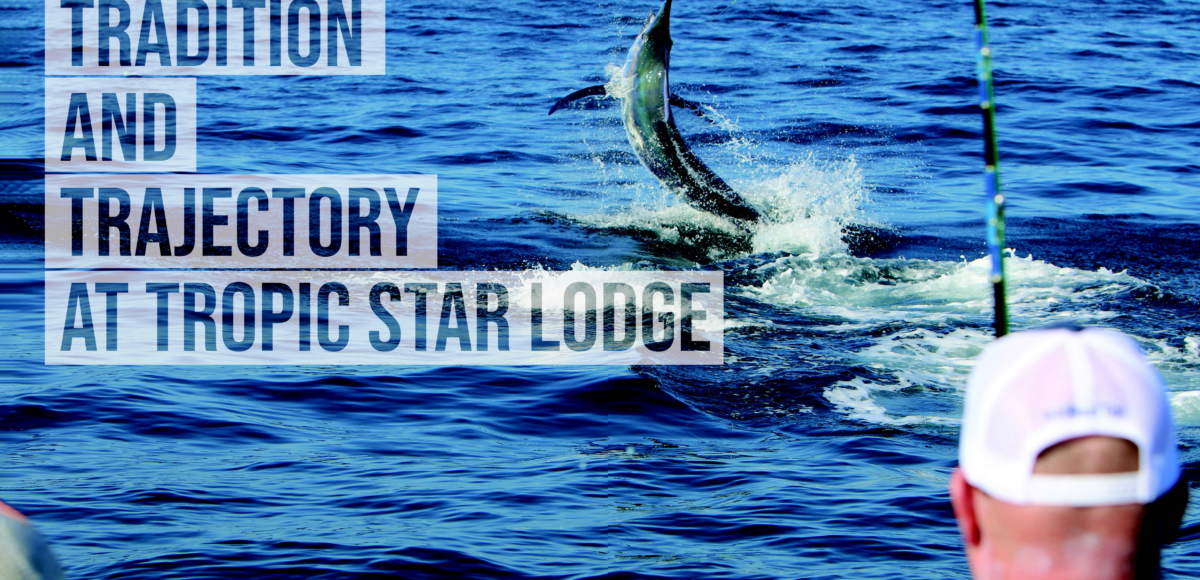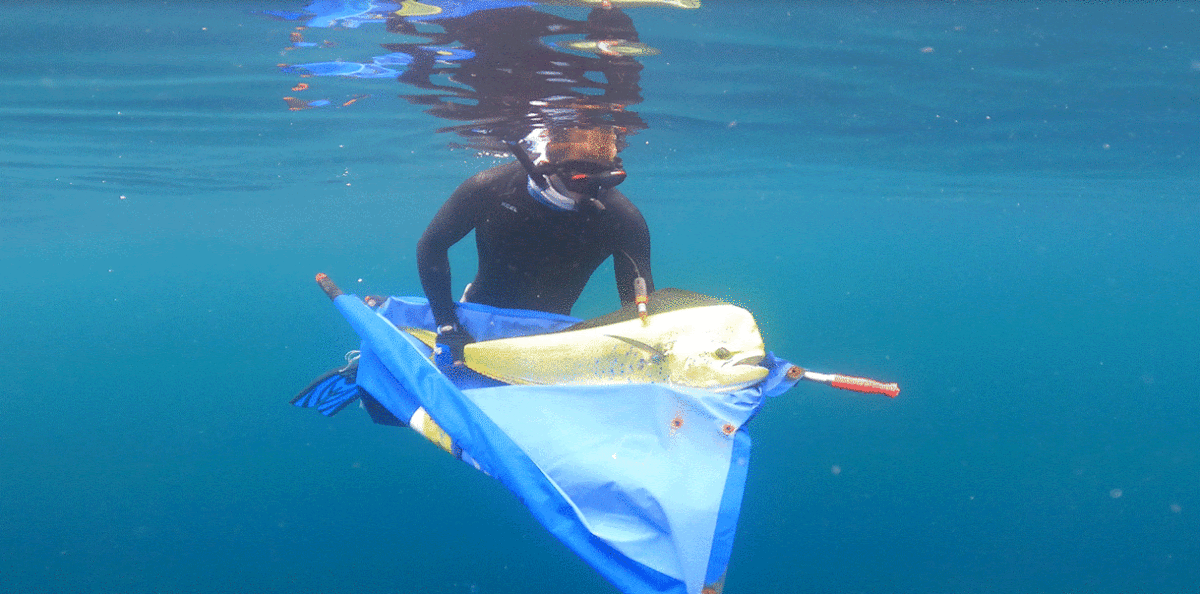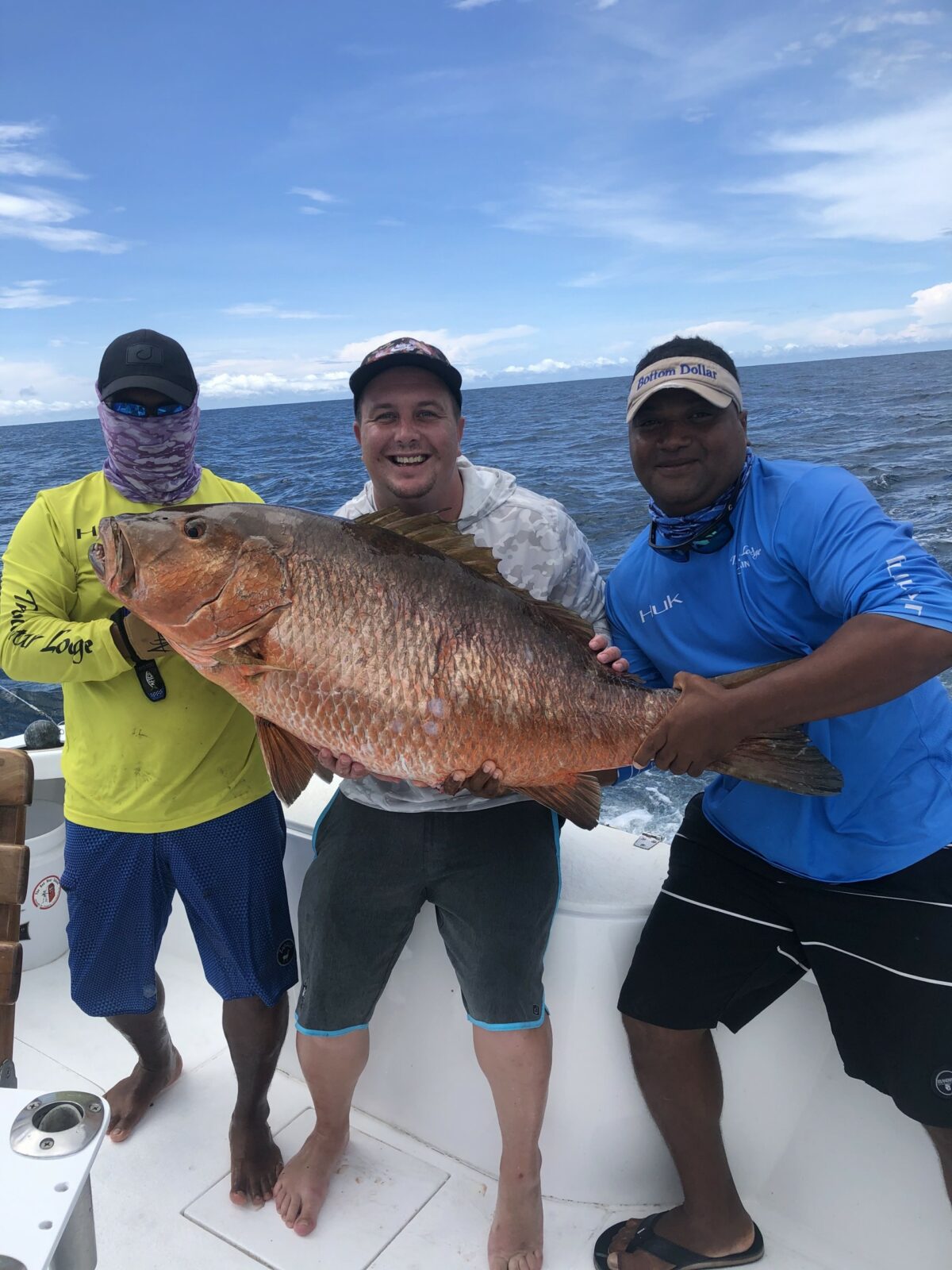 Since 1963, Tropic Star Lodge has been attracting anglers from around the world to one of the most remote, beautiful and inaccessible places in the New World. The ï¬shing out of Piñas Bay, Panama is good enough to justify travel here. It has been drawing anglers since Zane Grey came here under sail power in the 1920s. No matter how many marlin and tuna there may be, describing Tropic Star Lodge simply in terms of ï¬shing somehow misses the point.
Since 1963, Tropic Star Lodge has been attracting anglers from around the world to one of the most remote, beautiful and inaccessible places in the New World. The ï¬shing out of Piñas Bay, Panama is good enough to justify travel here. It has been drawing anglers since Zane Grey came here under sail power in the 1920s. No matter how many marlin and tuna there may be, describing Tropic Star Lodge simply in terms of ï¬shing somehow misses the point.Located in the Darien region of Panama, Tropic Star is completely inaccessible by road. The InterAmerican Highway the thorough-fare that runs from Canada, through the United States (as Interstate 35 it traverses the Central time zone from Minnesota to Texas), into Mexico and Central America stops in the Darien province. The nearest road is about 100 miles from the Lodge. This is an incredible attribute especially when you consider that most every other place in the world that is totally inaccessible by road is on an island or someplace in Mongolia. When viewing the coastline of other places, change is measured in years or decades. This place has really grown since the first time I came here in 2005¦ Looking at the dense, old growth rainforest that extends to the waterline in every direction you look, it is evident that the Darien is different. With the exception of the Lodge itself, a handful of villages and cellphone towers, the coast line looks very much the same today as it would have when the fi rst Spanish conquistadors sailed by in the 1500s. The trees and landscape look the same way they always have. More than simply an assemblage of trees, the landscape is a wild. The rainforests are cloud machines. When looking at the shore-line, the emergent streams of water vapor seem as though they could be emitted from the chimneys of gnome or fairy houses hid-den beneath the canopy. The physical setting of the place is as magical as it is awe inspiring. It is the type of place that is hard to describe without comparing it to itself. It is even more magical when you consider that there could be lurking 80-pound roosterfish or refrigerator-sized cubera snapper in the waves that break on the rocks just beneath the trees.

Protected by a natural harbor, returning to the dock after a day of fi shing makes for an easy transition to relax mode.
A Lot Goes into A World Class Fishing Experience
Everyone has heard of the IGFA world re-cords produced by those fishing out of Tropic Star Lodge (over 300 to date). Equally as impressive, especially given the setting and the remoteness of where it is located, is the scale of its operation. When running at it peak, the Lodge will employ up to 120 workers. Much of its workforce hails from the neigh-boring village of Piñas. Managers and other specialist employees come from other places and live on premises.

A good black marlin on the leader is an experience not soon to be forgotten.
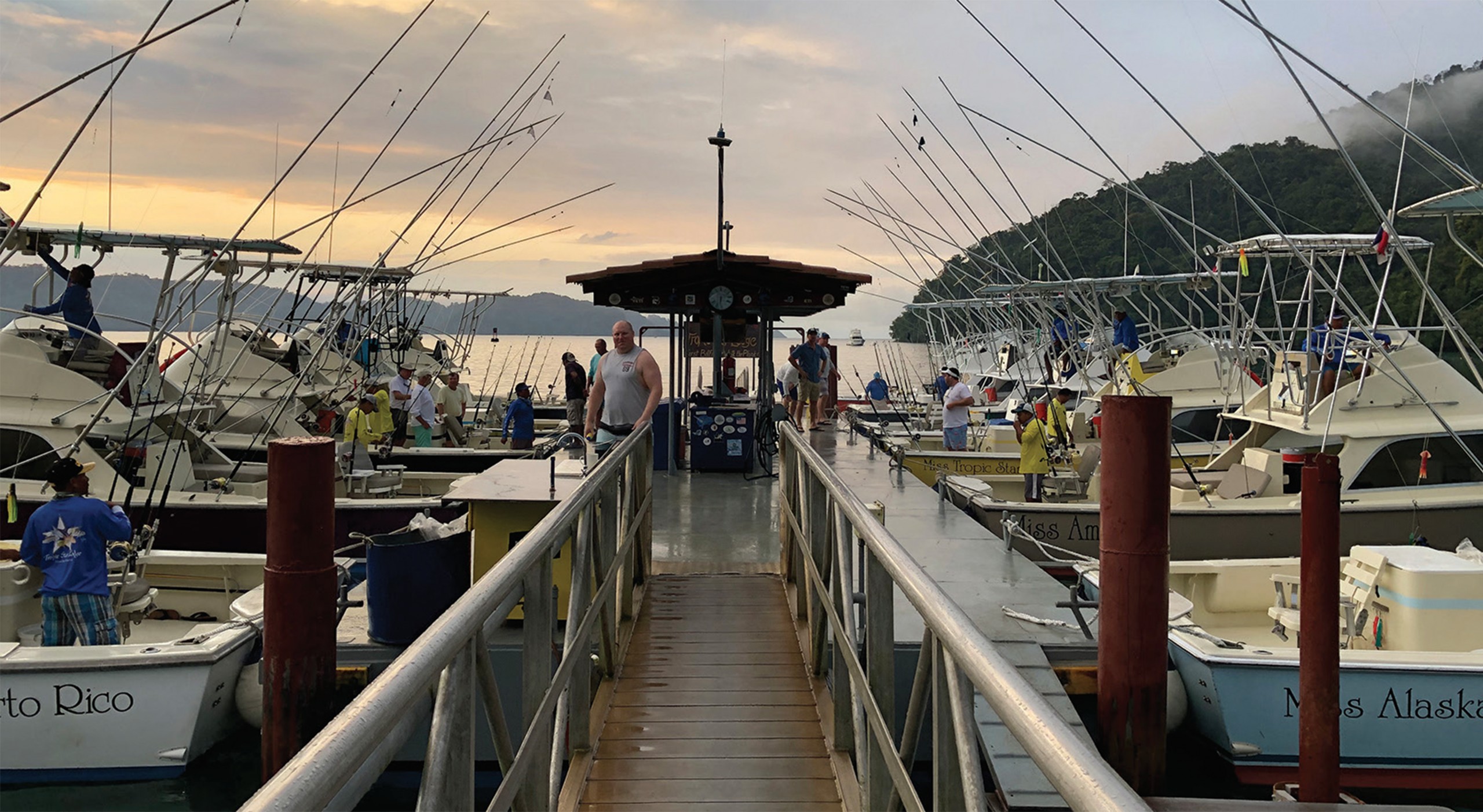
Tropic Star historic dock and iconic fleet of Bertrams.

The constant threat of attack by large sailfish keep live baits on their toes.
A Sportfishing University Town
Like many of the workers at the Lodge generally, all of Tropic Star captains and mates are from the village of Piñas. This homegrown talent is brought to the Lodge each morning on a panga. Prospective mates go through a serious two-year learning process before ever fishing with a client. After acceptance into the training program, a mate applicant career at Tropic Star begins with six months of working in the tackle shop. It is here that he learns tackle maintenance, leader tying (lots and lots of leader tying), reel spooling, smelting lead head bonito feathers and the like.

Black marlin and piña coladas¦what not to love?
The Man in the Black Suit
There is a category of fishing action that only happens in Panama. One-hundred-pound tuna stacking up blue runners (ku-jinua as they are called) on logs, jumping completely out of the water creating acres of carnage as they eat as many as they can as quickly as possible¦ The sight of dozens of 30-50-pound dorado behind the boat at once, with the realistic chance to see a 70-pounder that happens here, too. Pulling a live bonito, you can catch anything from stud roosterfish, jumbo cubera snapper, sailfish, big dorado and of course the black and blue marlin that headline the fishing. In short, there is something for everyone in Panama. The fish run large and the action can be epic.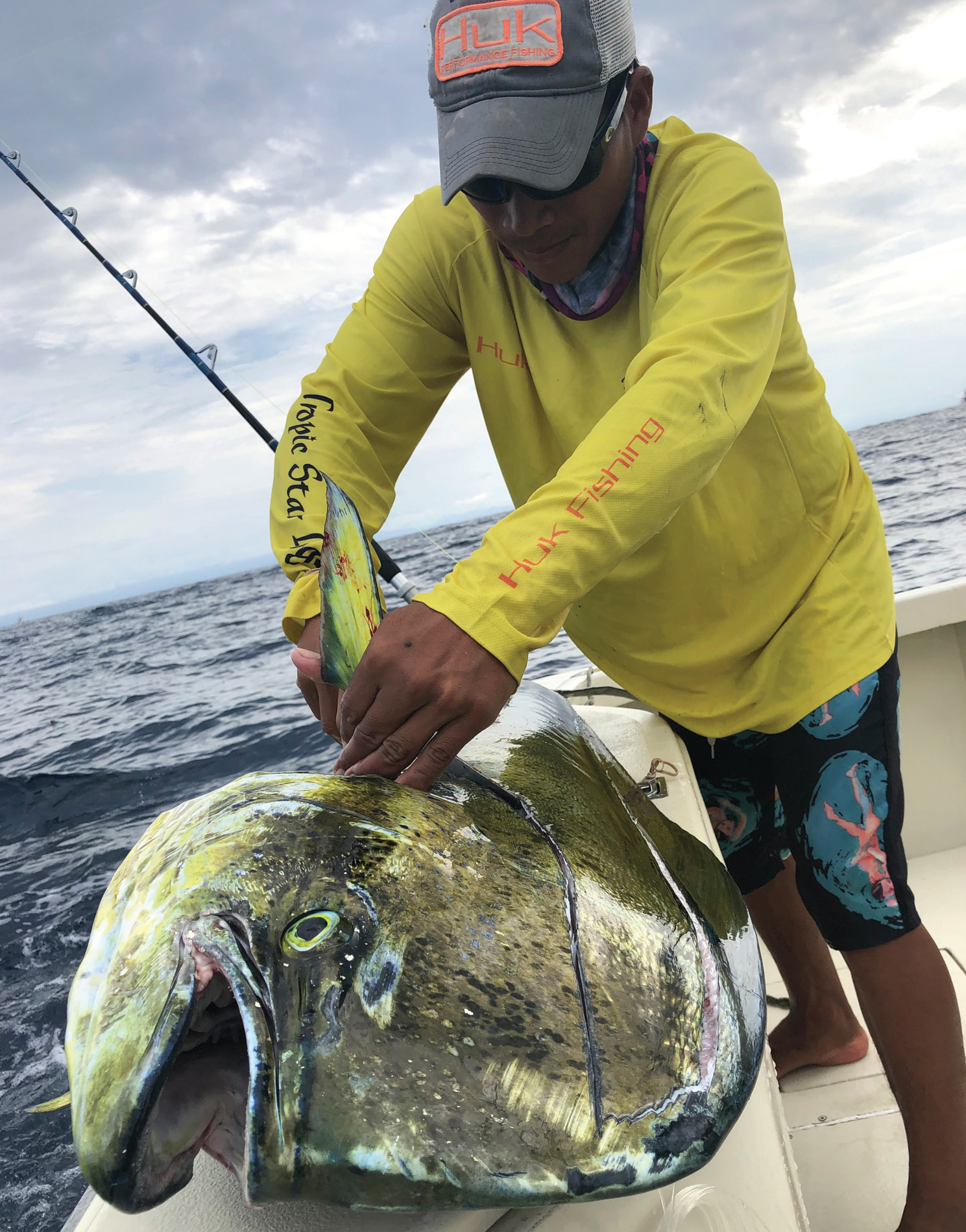 While there are options for most anyone here, it is the black marlin that is the headliner. This region of Panama is perhaps the most reliable place in the northern hemisphere to target blacks. The season for the man in the black suit begins to heat up in late November, building into December. Its recognized peak is the January full moon. There are large female blacks around, with the possibility of running across the fish of a lifetime. The black marlin fishing will remain good here until the water turns over. The timing of the event is variable (a consequence of northerly winds that blow consistently enough to create upwelling of cold, nutrient-rich water), but it generally happens between sometime after the middle of February. While the offshore scene turns off a bit, the Lodge switches over to a booming inshore bite full of big snapper, grouper and all kinds of things.
The story of the black marlin fishing here has been told before. While nobody has ever complained about running across one while trolling offshore in Costa Rica or Mexico or somewhere, there is something about deploying a spread of live bait with the intent of catching one. Many people come to Panama with the hope of ticking the black marlin off of their Royal Slam list, but fishing for these brutes can put a spell on you. There is something in the savagery of the way they attack live baits and their measured, almost thoughtful ferocity while on the leader that brings people back to this part of the world over and over again.
While there are options for most anyone here, it is the black marlin that is the headliner. This region of Panama is perhaps the most reliable place in the northern hemisphere to target blacks. The season for the man in the black suit begins to heat up in late November, building into December. Its recognized peak is the January full moon. There are large female blacks around, with the possibility of running across the fish of a lifetime. The black marlin fishing will remain good here until the water turns over. The timing of the event is variable (a consequence of northerly winds that blow consistently enough to create upwelling of cold, nutrient-rich water), but it generally happens between sometime after the middle of February. While the offshore scene turns off a bit, the Lodge switches over to a booming inshore bite full of big snapper, grouper and all kinds of things.
The story of the black marlin fishing here has been told before. While nobody has ever complained about running across one while trolling offshore in Costa Rica or Mexico or somewhere, there is something about deploying a spread of live bait with the intent of catching one. Many people come to Panama with the hope of ticking the black marlin off of their Royal Slam list, but fishing for these brutes can put a spell on you. There is something in the savagery of the way they attack live baits and their measured, almost thoughtful ferocity while on the leader that brings people back to this part of the world over and over again.
Tradition and a New Trajectory
Tropic Star Lodge is currently at a very interesting point in its development. A recent change in ownership has brought investment in infrastructure and the fleet along with a number of modifications that maintain the Lodge many traditions while providing an even better experience. Chief among these is the formation of a new private boat membership program that allows registered private boats to purchase fuel, meals and accommodation at the Lodge. For vessels staying longer than seven days, Tropic Star can bring in provisions from Panama City. Private boats are even invited to participate in the Lodge annual billfish tournament each November. Teams of three anglers pay $300 per person. The tab includes their tournament registrations and dinners at the Lodge. All of this is designed to make Piñas Bay as inviting as it is remote. Beyond creating programs designed to make the private boat fishing experience at the Lodge more inviting, it has invested in capital improvements to the same end. Tropic Star has expanded its waterfront dining room complete with wrap around windows that make breakfast or dinner a scenic experience and increased dining capacity by 25%. Not only can the culinary department handle more dining guests, but the Lodge has added a door between the bar and dining room. Segmenting the bar makes it easier and less formal for traveling boat crews and anglers to grab a beer and relax, while being a side from the more formal dinner service. A waterfront bar is also currently under construction. Located between the entry way to dock and the restaurant, it is an inviting place for private crews to decompress after a day of fishing and enjoy a cold beer or two with their feet planted on solid ground. The waterfront bar, much like the outdoor dinners cooked on the grill three nights per week, is designed to provide casual, inclusive experiences for charter guests and the traveling boat alike.

Panama is a great place to fish. It is, however, a very dangerous place to be a bonito.
The Fishing in Context
When fishing Tropic Star, it is readily apparent why it is a bucket list experience. Our first day of fishing we caught a grand slam highlighted by a 400-pound black marlin. This was great¦ but you can catch grand slams in a lot of places, right? How about the dolphin fishing? One night at dinner, another group reported going 31 for 34 on dorado. These were big ass fish 25 to 50 pounders. They were so prolific that we decided to run teasers to stop hooking them. Sometimes there would be a swarm of 40 dorado behind the boat at the same time. If a big one came up, wed feed it a bonito or sling it a popper. Then there is the history. There is a photo John Wayne at the Lodge in the dining room. Any place that is good enough for the Duke is good enough for me¦ Were that not enough, the food is really is also really good and the pool makes a great place to go for your personal best Piña Colada record. It is a wonderful place.






